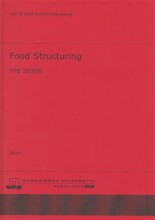Emulsions: Principles and preparation - Making emulsions using physical destabilization - Phase inversion
8 important questions on Emulsions: Principles and preparation - Making emulsions using physical destabilization - Phase inversion
Which 2 methods of phase inversion to make emulsions exist? And what are their differences?
- Catastrophic phase inversion --> adding more and more dispersed phase
- Transitional phase inversion --> properties of emulsion are changed from favouring droplets of the low-viscous phase to droplets of the high-viscous phase
For what is phase inversion used?
When the viscosity of one of the phases is much larger.
How does catastrophic phase inversion work?
- One starts with the phase that should become the dispersed phase. One then slowly adds the other phase (B) to phase (A), while the system is agitated. Droplets of phase B are formed, which are broken up into small droplets (agitation). However, you want A in B, so the surfactant system is dissolved in phase B and not in phase A.
- Emulsion becomes so concentrated and viscosity so high, that the droplets of B start to coalesce. B makes the continuous phase and A starts to be the dispersed phase.
- Higher grades + faster learning
- Never study anything twice
- 100% sure, 100% understanding
What are disadvantages of catastrophic phase inversion?
- Final droplet size is usually not very small
- Emulsion can be rather polydisperse
How does transitional phase inversion work?
The first step is to prepare an emulsion of the phase that should become the continuous phase (B) in a continuous phase (A). Surfactant system is chosen carefully, favours the formation of B-in-A emulsion. When emulsion is prepared, conditions are changed (temperature, pH) so that it favours A-in-B emulsion.
What is a difference between catastrophic and transitional phase inversion?
Catastrophic --> surfactant has affinity for A or B
Transitional --> surfactant affinity for both is equal
Transitional --> surfactant affinity for both is equal
What is a micro emulsion?
An intimately mixture of 2 phases. There is not clear A-in-B or B-in-A emulsion.
Why is transitional phase inversion not used in the food industry?
Due to the properties of oils commonly used in foods, finding a surfactant system that exhibits this behaviour has not yet succeeded.
Try our study magic for free
a PDF, study it super fast
- No sign up, email or credit card needed!
- AI makes unlimited flashcards
- Get unlimited quizzes and tests
- Ask AI anything
Create a notebook
- No sign up, email or credit card needed!
- Have and keep perfect overview
- Make flashcards, notes and mind maps
- Review, test and score!
The question on the page originate from the summary of the following study material:
- A unique study and practice tool
- Never study anything twice again
- Get the grades you hope for
- 100% sure, 100% understanding
Remember faster, study better. Scientifically proven.




























